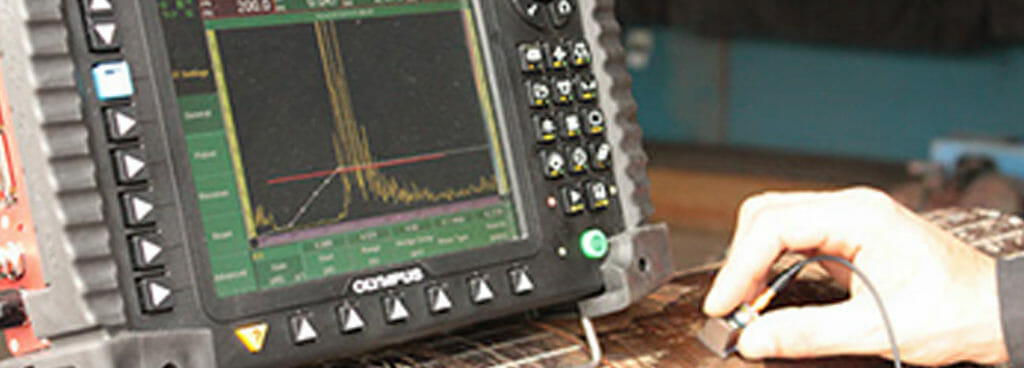How Welding Inspection Racine Makes Certain Security and Compliance
How Welding Inspection Racine Makes Certain Security and Compliance
Blog Article
Ingenious Techniques to Fillet Weld Assessment and Screening: Enhancing Weld High Quality and Conformity Criteria
In the realm of welding, the top quality and integrity of fillet welds play an important role in making sure the architectural stability and reliability of numerous commercial components. With the continuous drive for improved efficiency and compliance with rigorous standards, the expedition of ingenious approaches to fillet weld assessment and screening has become crucial. As sectors evolve, the conventional approaches might no more suffice in satisfying the needs of modern welding applications. By welcoming innovative modern technologies and approaches, a new horizon of possibilities arises in the world of weld top quality assessment and adherence to conformity requirements.
Advanced Non-Destructive Screening Methods
Utilizing state-of-the-art technologies, advanced non-destructive screening techniques play a vital role in making sure the honesty and quality of fillet welds. These techniques, such as phased range ultrasonic testing (PAUT) and magnetic fragment testing (MPT), offer detailed understandings right into the weld's interior framework without creating any kind of damage to the product. PAUT, for example, makes use of multiple ultrasonic aspects to check the weld from numerous angles, giving a comprehensive visualization of potential flaws like absence of fusion or fractures.
By utilizing these advanced non-destructive testing strategies, weld assessors can properly examine the high quality of fillet welds, making sure compliance with sector requirements and guidelines. The capability to identify problems early on not only enhances weld quality however additionally protects against expensive rework or failures in architectural integrity, underlining the importance of these cutting-edge testing techniques in welding evaluations.
Robotics and Automation in Examination
The integration of robotics and automation has revolutionized the assessment process for fillet welds, improving effectiveness and accuracy in high quality analysis. Robotics offer exact control and repeatability in inspecting welds, guaranteeing consistent and trustworthy outcomes. Automated systems can be programmed to follow certain assessment courses, making certain extensive insurance coverage of welds and reducing the danger of human error.
Robot evaluation systems furnished with innovative sensing units can detect and measure weld attributes with high accuracy, giving comprehensive information for evaluation. These systems can identify defects such as cracks, lack of blend, and porosity, making it possible for prompt corrective activities to be taken. Additionally, robotics and automation enable real-time information collection and evaluation, giving instant responses to drivers and promoting quick decision-making processes.
Moreover, using robotics and automation in fillet weld inspection enhances overall performance by lowering inspection times and increasing examination throughput. By streamlining the evaluation process, makers can make sure weld high quality and conformity criteria are satisfied successfully, ultimately causing set you back financial savings and improved item top quality.
Utilizing Artificial Knowledge for Evaluation
Fabricated intelligence plays a critical function in improving the efficiency and precision of evaluation in fillet weld inspection procedures. AI algorithms can rapidly process substantial quantities of information from weld examinations, finding flaws or variances that may be challenging to determine with the naked eye - Welding Inspection Racine.
Additionally, AI systems can find out from past evaluation information, constantly boosting their capability to identify prospective flaws and discrepancies in fillet welds. This flexible knowing capacity enhances the general high quality control procedure, decreasing the chance of human mistake and making sure that welds meet the required criteria. By integrating man-made intelligence right into fillet weld analysis, industries can achieve higher levels of efficiency, uniformity, and conformity in their assessment practices.
Portable Equipment for On-Site Assessment
 Enhancing field examination effectiveness, the adoption of portable straight from the source tools transforms on-site evaluation procedures for fillet welds. These devices use adaptability and benefit, allowing inspectors to conduct thorough examinations in numerous places, including difficult or remote atmospheres. Portable devices such as ultrasonic testing gadgets, magnetic fragment assessment devices, and electronic radiography systems supply real-time data and high-resolution imaging abilities, enabling fast decision-making and immediate responses on weld top quality.
Enhancing field examination effectiveness, the adoption of portable straight from the source tools transforms on-site evaluation procedures for fillet welds. These devices use adaptability and benefit, allowing inspectors to conduct thorough examinations in numerous places, including difficult or remote atmospheres. Portable devices such as ultrasonic testing gadgets, magnetic fragment assessment devices, and electronic radiography systems supply real-time data and high-resolution imaging abilities, enabling fast decision-making and immediate responses on weld top quality.One substantial advantage of mobile tools is their capacity to streamline evaluation treatments, decreasing downtime and boosting general performance. Assessors can conveniently move these devices to different task websites, eliminating the need for delivering hefty equipment or elements to off-site facilities. Furthermore, the portability of these devices advertises cost-effectiveness by lessening transportation costs and accelerating inspection timelines.
Moreover, the use of mobile official statement devices for on-site inspection promotes proactive quality assurance steps, as assessors can quickly determine and attend to any kind of potential welding problems or discrepancies. By incorporating these cutting-edge innovations right into on-site assessment practices, welding specialists can make sure compliance with market criteria and boost weld high quality, eventually bring about boosted structural honesty and safety in different welding applications.
Assimilation of Data Administration Solution
Having enhanced on-site assessment processes with the application of portable tools, the following stage includes the seamless assimilation of information administration systems to additionally enhance performance and data evaluation abilities in fillet weld assessment and screening. Welding Inspection Racine. By incorporating information administration systems into the examination procedure, companies can enhance data collection, storage, and analysis. This assimilation permits real-time tracking of weld quality, prompt recognition of problems, and timely decision-making to remedy any problems that may develop throughout the assessment process
Information administration systems play a vital duty in centralizing assessment information, facilitating very easy access for accredited personnel, and ensuring data stability and safety and security. Via the assimilation of these systems, inspectors can create thorough reports, track historic data for fad analysis, and improve total procedure efficiency. Furthermore, the combination of data administration systems enables seamless communication between various stakeholders associated with the assessment process, promoting collaboration and improving general quality control measures. Inevitably, the assimilation of data management systems offers to boost the standards of fillet weld assessment and testing, making certain conformity with industry laws and enhancing weld top quality.
Verdict
Finally, cutting-edge methods to fillet weld evaluation and testing have actually significantly boosted my explanation weld quality and compliance requirements. Advanced non-destructive testing approaches, robotics, automation, synthetic intelligence, mobile tools, and information management systems have actually transformed the means weld inspections are performed. By using these modern technologies, industries can ensure that welds meet the required quality requirements and guidelines, ultimately boosting overall effectiveness and safety in welding procedures.

By using these sophisticated non-destructive testing methods, weld examiners can precisely assess the top quality of fillet welds, making certain compliance with market standards and policies. Portable tools such as ultrasonic testing tools, magnetic particle assessment tools, and digital radiography systems provide real-time information and high-resolution imaging capabilities, allowing quick decision-making and prompt comments on weld top quality.
Having optimized on-site inspection processes through the application of mobile tools, the following phase involves the smooth assimilation of information management systems to additionally boost performance and data evaluation capabilities in fillet weld evaluation and testing (Welding Inspection Racine). Inevitably, the assimilation of information administration systems offers to raise the criteria of fillet weld inspection and testing, guaranteeing conformity with industry laws and enhancing weld quality
 In final thought, cutting-edge methods to fillet weld assessment and testing have substantially improved weld quality and conformity requirements.
In final thought, cutting-edge methods to fillet weld assessment and testing have substantially improved weld quality and conformity requirements.Report this page